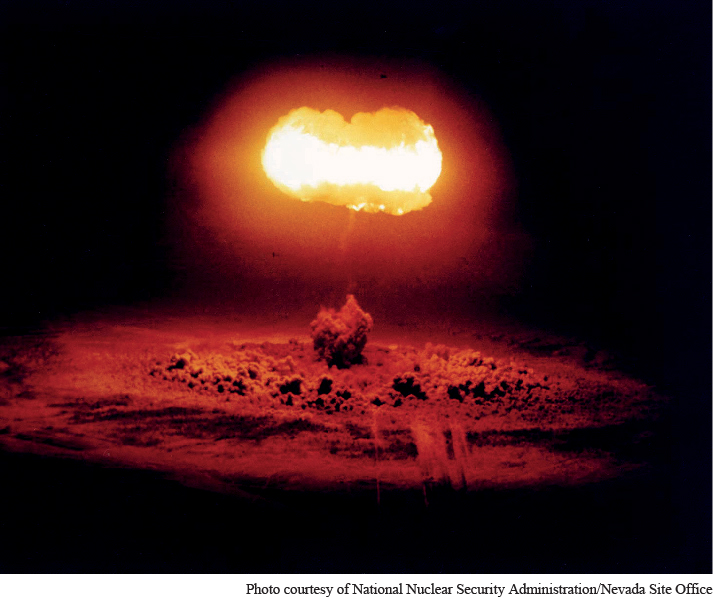Nuclear Standoff and Third-World Rivalry
AP® EXAM TIP
Cold war tensions around the globe are an important subject in the AP® course.
The Cuban missile crisis gave concrete expression to the most novel and dangerous dimension of the cold war — the arms race in nuclear weapons. An initial American monopoly on those weapons prompted the Soviet Union to redouble its efforts to acquire them, and in 1949 it succeeded. Over the next forty years, the world moved from a mere handful of nuclear weapons to a global arsenal of close to 60,000 warheads. Delivery systems included bomber aircraft and missiles that could rapidly propel numerous warheads across whole continents and oceans with accuracies measured in hundreds of feet. During those decades, the entire world lived in the shadow of weapons whose destructive power is scarcely within the bounds of human imagination.

Awareness of this power is surely the primary reason that no shooting war of any kind occurred between the two superpowers. In the two world wars, the participants had been greatly surprised by the destructiveness of modern weapons. During the cold war, however, the leaders of the two superpowers knew beyond any doubt that a nuclear war would produce only losers and utter catastrophe. Already in 1949, Stalin had observed that “atomic weapons can hardly be used without spelling the end of the world.”9 Particularly after the frightening Cuban missile crisis of 1962, both sides carefully avoided further nuclear provocation, even while continuing the buildup of their respective arsenals. Moreover, because they feared that a conventional war would escalate to the nuclear level, they implicitly agreed to sidestep any direct military confrontation at all.
Still, opportunities for conflict abounded as the U.S.-Soviet rivalry spanned the globe. Using military and economic aid, educational opportunities, political pressure, and covert action, both sides courted countries emerging from colonial rule. Cold war fears of communist penetration prompted U.S. intervention, sometimes openly and often secretly, in Iran, the Philippines, Guatemala, El Salvador, Chile, the Congo, and elsewhere. In the process, the United States frequently supported anticommunist but corrupt and authoritarian regimes. However, neither superpower was able to completely dominate its supposed allies, many of whom resisted the role of pawns in superpower rivalries. Some countries, such as India, took a posture of nonalignment in the cold war, while others tried to play off the superpowers against each other. Indonesia received large amounts of Soviet and Eastern European aid, but that did not prevent it from destroying the Indonesian Communist Party in 1965, killing half a million suspected communists in the process. When the Americans refused to assist Egypt in building the Aswan Dam in the mid-1950s, that country developed a close relationship with the Soviet Union. Later, in 1972, Egypt expelled 21,000 Soviet advisers and again aligned more clearly with the United States.